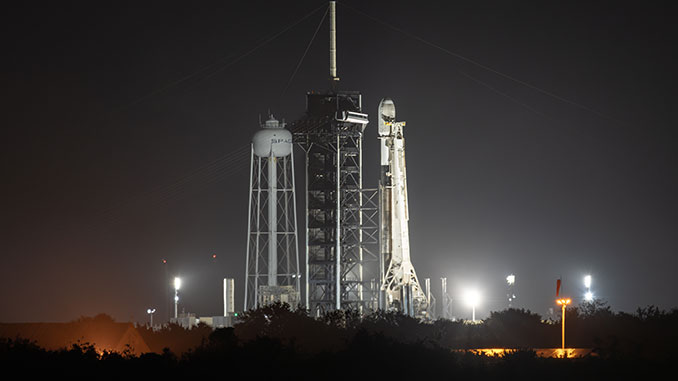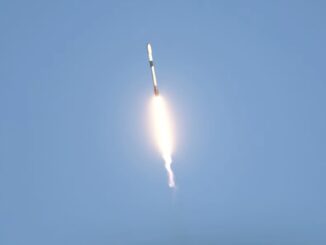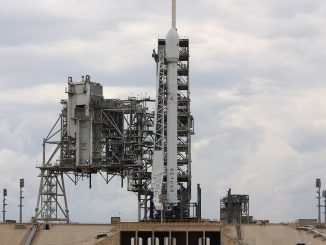
SpaceX is preparing to launch a batch of Starlink satellites in the predawn hours of Saturday morning as the Federal Aviation Administration readies a rollout of commercial launch restrictions for U.S. airspace.
The company aims to launch the Starlink 10-51 mission from Launch Complex 39A at NASA’s Kennedy Space Center at 3:42:50 a.m. EST (0842:50 UTC). The rocket will fly on a north-easterly trajectory upon leaving Florida’s Space Coast.
Spaceflight Now will have live coverage beginning about an hour prior to liftoff.
SpaceX will launch the mission using the Falcon 9 booster with the tail number B1069, which will make its 28th flight. Its previous missions included CRS-24, OneWeb Launch #15 and Eutelsat Hotbird 13F.
Nearly 8.5 minutes after liftoff, B1069 will perform an autonomous landing on the drone ship, ‘A Shortfall of Gravitas’, positioned in the Atlantic Ocean off the coast of South Carolina. If successful, this will be the 131st booster landing on this vessel and the 531st booster landing to date.
SpaceX intends to deploy the 29 Starlink V2 Mini Optimized satellites from the rocket’s upper stage a little more than an hour after liftoff.
Curfew coming
The mission comes days in advance of a new, emergency directive issued by the FAA on Thursday that restricts commercial space launches and reentries sanctioned by the FAA to take place between 10 p.m. and 6 a.m. local time beginning at 6 a.m. EST on Nov. 10.
In the face of the ongoing government shutdown, U.S. Transportation Secretary Sean Duffy, who is also serving as NASA’s acting administrator, also issued a “temporary 10 percent reduction in flights at 40 high traffic airports across the country.” Among those impacted airports are Orlando International Airport and Los Angeles International Airport, the two closest major airports to both Cape Canaveral and Vandenberg respectively.
The launch curfew will have varying degrees of impact, depending on the interpretation of “commercial launch”.
SpaceX announced five more Starlink missions between Nov. 10 and Nov. 19 and is also planning to launch the Transporter-15 mission on Nov. 11. Following a scrub Thursday night, United Launch Alliance’s next attempt to launch the ViaSat-3 F2 mission will also fall after the FAA’s launch restrictions go into effect.
SpaceX does have some latitude with shuffling its launch times for its Starlink mission to fit the FAA’s new mandate. However, missions like Transporter-15 that seek to launch payloads into a Sun-synchronous orbit may need to seek special exemption.
Spaceflight Now also reached out to the FAA for comment, but received the automated response: “Due to a lapse in funding, the FAA is not responding to routine media inquiries.”
Rocket Lab for its part said that it shouldn’t face much impact from the decision.
“We can confirm launches from [Launch Complex 1] in New Zealand are unaffected by the restrictions, as these launches do not operate in U.S. airspace,” the company said. “We also expect minimal impact to launches from LC-2 in Virginia.”




Be the first to comment